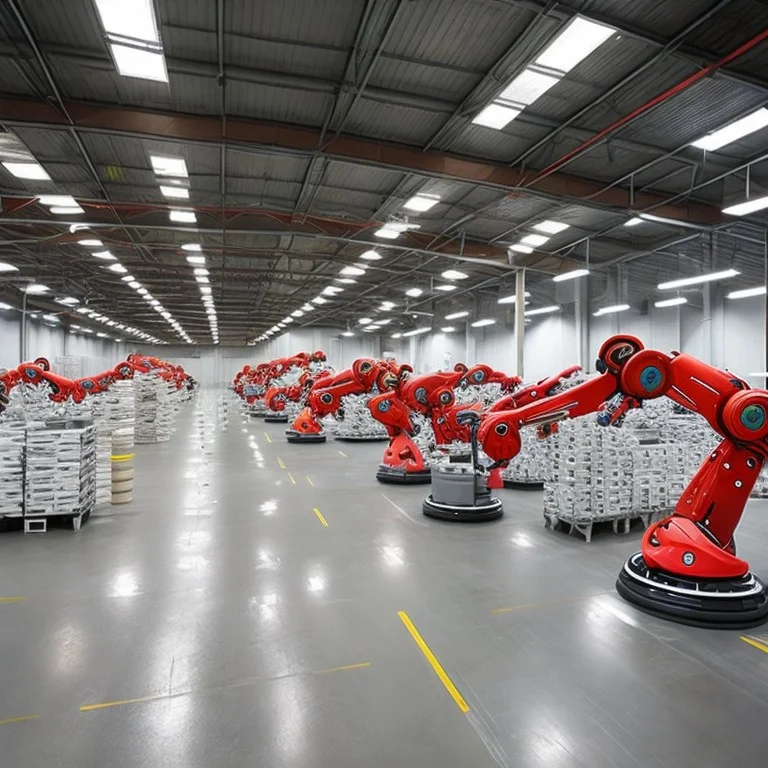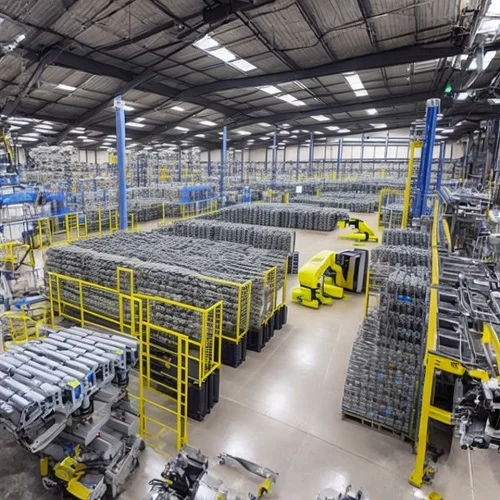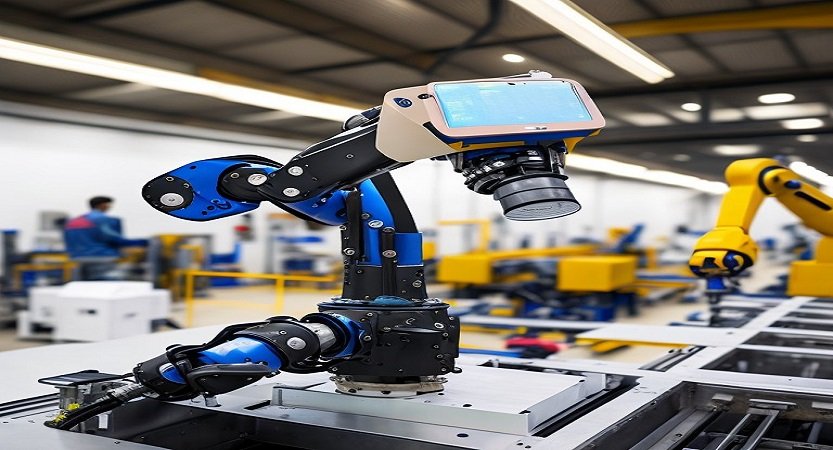Hello Automation, I’m sure you missed the robotics articles, well, so did we. That’s why we are here to share with you a very popular topic: Robotics in warehouses.
The application of robotic technologies to achieve the automation of processes in warehouses, and to be able to apply the term Intelligent Warehouse is being a very requested topic in the industry in these years. Simply the application of the word intelligent is understood by providing autonomy and profitability to most of the processes that are commonly performed manually.
To achieve this it is necessary to mention some concepts that you should already know about the current Industry 4.0, such as: Internet of Things (IoT), Collaborative Robotics, Smart Logistics, Artificial Intelligence, Big Data, E-Commerce, among others, some already discussed here on our website and others that we will undoubtedly see soon.
What is a smart warehouse?
Let’s start by clarifying that an intelligent or robotic warehouse is one that has automatic systems and specialized software for the control and handling of its goods. The use of machinery in the logistics field is not new, however, digitalization and the advent of Industry 4.0 have resulted in significant advances in the field of robotics and automation applied to every link in the supply chain.

Let’s be clear that it is the growth of e-commerce itself that is putting pressure on the logistics sector. The demand for streamlining all processes to achieve faster and more flexible deliveries has led to the more aggressive use of these intelligent warehouses. To achieve this, warehouses are betting on automation and the new generation of management systems, driving a market that has grown strongly in recent years. All of this has highlighted the fact that traditional merchandise management models are not capable of streamlining operations sufficiently to meet these objectives.
All this progress in the warehousing and logistics sector is supported by leading warehousing solution providers. They provide both hardware and software solutions that are making a strong commitment to modernizing the industry. Today, these companies have already succeeded in bringing warehouse automation and management solutions to the market. Some of them are powered by artificial intelligence, machine learning and other technologies that support the digitization of operations.
Reasons to choose robotics in warehouses
According to international data there are many reasons why it is necessary to apply automation in traditional warehouses, among these are:
- Automated management software: It is essential in an intelligent warehouse to automatically manage incoming and outgoing goods, know their location, rotation, expiration date and relocations for the preparation of previous orders.
- Space saving: reducing the space between aisles and increasing the height of the shelves is paramount, resulting in considerable savings in storage space.
- High performance: increase vertical and horizontal travel speeds, allowing for shorter goods-in and goods-out cycles.
- Expansions and adaptations: Many of these systems have a modular concept, which allows for expansions according to the needs of storage, flow of goods, changes in the format of the units or in the order picking and preparation policy.
Most common operations to automate
Perhaps in the not too distant future, warehouses will eventually do without human labor. Today, even in the most modern facilities, a certain level of human intervention is still necessary. As with any automation project, warehouses are not spared. We can always find conditions that will limit many possibilities. We must be able to study and evaluate them until we find the scenario and the systems that are best suited to the efficiency and productivity objectives to be achieved.

Some of the most commonly used solutions to automate a warehouse are the following:
Auxiliary systems for goods handling
- Stacker cranes: It is an automatic system capable of picking and placing palletized goods on the racks. A stacker crane consists of a sturdy tower that runs along the shelves and a cradle with forks where the pallets are attached when they are moved. Its use makes it possible to replace forklifts.
- Anthropomorphic robots for gripping and automatic displacement: Some warehouses where the operation is predictable and stable, allow the installation of robotic arms to execute the entire order picking phase automatically. These are fixed industrial robots that normally assist in the placement and palletization of goods.
- Auxiliary robots that assist the operator in gripping and moving operations: In this field, robots that assist the worker in the development of tasks, these include:
- Mechanical arms for handling heavy loads that allow the operator to move heavy goods for palletizing.
- Packaging machines to adopt very different formats depending on the type of packaging required.
- Mechanical exoskeletons, also treated as PPE (Personal Protective Equipment), are mobile robotic suits that adjust to the person wearing them, improving their physical capabilities and limiting fatigue when executing movements.
Transport of goods between different zones
- Conveyor Pallet: moves along the aisles between shelves and approaches them from and to any direction. The semi-automatic version works with the operator as it can be programmed and operated directly from a tablet.
- Conveyors: Whether roller, belt or chain conveyors, conveyors are a static system for transferring loads in the warehouse. They save the displacement of goods with manual handling equipment. They are often designed as an indispensable complement to stacker cranes in automated warehouses.
- Electrovias: cover the same operation as the conveyors with the difference that they have an overhead guide system (not anchored to the warehouse floor). Their main advantage is the high speed they reach and therefore they are used for medium distances.
- AGVs: these vehicles are capable of following a path without any human intervention. They are similar to forklifts and have a loading platform with forks. Their sensors allow them to pick up and follow the trail of radio frequency waves launched by a transmitter.
Conclusions
And that’s all, friends. We hope that you have been able to see that although a significant investment is necessary at the beginning, the high profitability ends up being evident. Beyond providing this article in an instructive and informative way to demonstrate that through the application of these new technologies it is possible to get closer and closer to excellence in warehousing services and therefore an increase in efficiency in the management of the supply chain, we try to cover everything to help those who require it, to decide which option can adapt more to your company or business.
Remember that if you have any questions or suggestions on any topic that you would like us to explain or develop, you can leave it in the comments or through our contact form and we will gladly assist you.
If you liked the article leave us a LIKE and share with your friends on Social Networks.
See you soon!
Related Articles:




